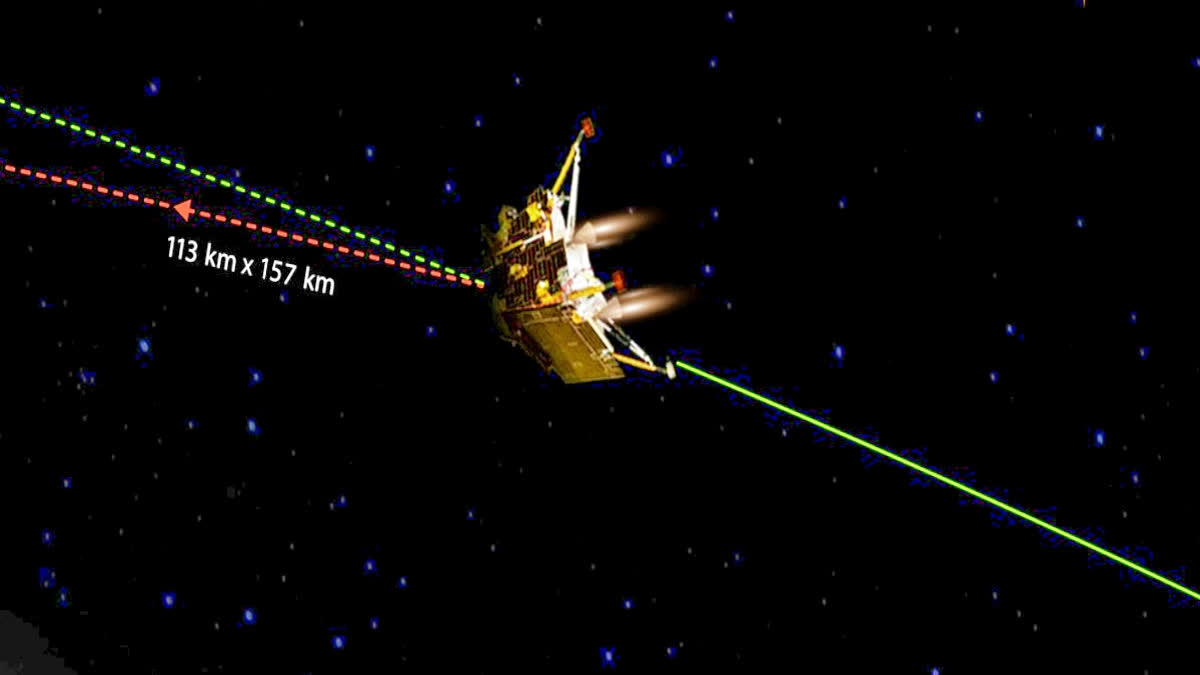Bengaluru (Karnataka): The Indian Space Research Organisation (ISRO) has provided updated information on its historic mission Chandrayaan-3 as the spacecraft progressively approaches the Moon. On August 23, Chandrayaan-3 will attempt its first soft descent near the Moon's south pole.
After a flawless deboost, the Chandrayaan-3 Lander module's Vikram lander and Pragyan rover are currently in an orbit measuring 113 kilometres by 157 kilometres. The second deboost is scheduled for August 20, 2023, at approximately 2:00 p.m. Chandrayaan-3, which was launched on 14 July this year, is a follow-up mission to Chandrayaan-2 designed to demonstrate end-to-end capability in secure lunar landing and roving.
Key obstacles during Moon soft-landing
The greatest obstacles to a soft landing on the Moon are:
- There is no atmosphere at 100 km altitude on the Moon, so parachutes cannot descend gently.
- Between 30 kilometres and 100 metres in altitude, Chandrayaan-2 failed. At this point, the lander approached the Moon within 2.1 kilometres before crashing due to a software error that prevented it from controlling its speed during impact.
- At an altitude of 100 metres, the Chandrayaan-3 lander Vikram could encounter unexpected and abrupt changes in the terrain, which could result in software glitches or altitude sensor errors.
- During the landing, lunar material will become airborne, posing a risk for sensor errors and thruster shutdowns. Even after the landing speed is reduced, lunar particles will continue to pose a threat. The particles can obscure the lander's camera lens and cause inaccurate readings.
The biggest issue for ISRO is tilting the lander
The direction of the spacecraft would be crucial for the Chandrayaan-3 spacecraft's safe landing, according to ISRO Chairman. Although this speed is horizontal to the surface of the moon, he claimed that the initial velocity of the landing process is close to 1.68 km per second. The Chandrayaan-3 must become vertical because it is almost 90 degrees slanted in this location. The "trick" we must use in this situation, according to ISRO Chairman, is the ability to move the spacecraft from a horizontal to a vertical direction viz facing the legs parallel to Lunar Surface
In order to achieve a secure lunar landing, Chandrayaan-3 will be manoeuvred into a vertical position through a series of phases. Due to ISRO's prior failure to properly land its lander on the Moon's surface during the Chandrayaan-2 mission, this step is crucial.
The difficulty, according to the ISRO director, also includes reducing fuel use, assuring precise distance computations, and ensuring that all algorithms are operating as intended.
However, the ISRO team has made provisions to ensure that Vikram attempts to land even if the calculations are off by a small amount. "We have ensured that a landing velocity of up to three metres per second will not cause damage to Chandrayaan-3. It ensures that the vertical velocity is constrained so that the structure does not fall', ISRO Chairman explained.
Also read: Chandrayaan-3 would be helpful even for NASA, says space analyst Girish Linganna



